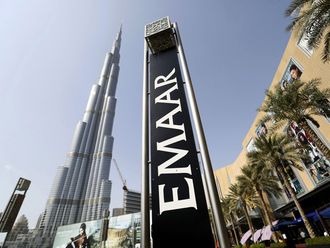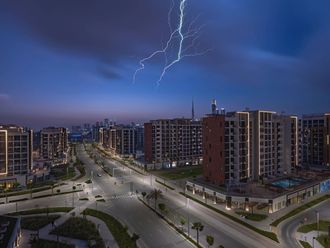Dubai is already one of the most competitive places to do business in the world, with average office rents cheaper than Mumbai, Beijing or London. And 2017 looks set to increase that competitiveness with office rents flattening out as a result of increased capacity in key free zones.
Local market uncertainty triggered by oil prices and government spending was one of the key factors for a weak performance in 2016, with many companies looking to minimise their capital expenditure and lease terms. As such, Knight Frank witnessed occupiers searching for fully fitted space with the aim of limiting their capital expenditure.
Market stability was a concern for occupiers, with many strategically putting on hold their office searches and instead extended existing contracts for another six to 12 months, allowing them the time to re-evaluate the rental market in the new financial year.
The fourth quarter of 2016 was the best performing last year on the back of marginally increased occupier sentiment.,
Landlords realised difficult market conditions, and as such, started to offer greater incentives and flexibility as the dynamic shifted to that of an occupier market. Landlords became more competitive, demonstrated by a greater level of sophistication in their marketing with initiatives that included rent reductions, offer of fitted and furnished offices with DEWA and air-conditioning included in the service charge and longer initial rent-free periods.
Areas that saw improved performance continued to be in the Tecom free zone (namely Dubai Internet City/Media City) and the DIFC. Performance of areas such as D3 declined as their rents increased substantially on the back of stronger occupancy levels, while occupancy of strata-owned assets in Business Bay continued to dwindle. Large relocations such as Samsung, to the Butterfly building, has since left vacancy in buildings such as Business Central Towers. However, Knight Frank expects this to be absorbed by the market. We expect the year to be one of possibilities for tenants, but challenging for landlords. With the recent stabilised oil prices and continued government investment, occupier sentiment has improved and companies are now starting to resume their office searches capitalising upon greater landlord motivation.
The most active commercial sectors continue to be finance and media related organisations operating in the DIFC and Dubai Media City free zones respectively. A large amount of stock is due for delivery in 2018, with developments such as ICD Brookfield, Gate Village 11, One Central and HSBC headquarters coming online, which will bring a welcome addition to the current limited levels of international Grade A quality space available in Dubai.
In the short term, there has been a large quantity of new developments along Shaikh Zayed Road/Al Manara that was recently delivered, or is due for delivery in Q2-17. These single owner office buildings offer tenants reasonable quality accommodation. However, fierce competition between neighbouring developments are likely to push the gap between asking rates and achievable rates further, with asking prices up to a third higher than achieved rates.
As global economic uncertainty continues to prevail (Brexit and Trump), Dubai is considered one of the most attractive commercial locations within the region. It is a key hub for international firms, many whom are consolidating multiple offices into one single regional office. The commercial market is expected to pick up in 2017 as businesses settle to the new norm in oil prices.
We expects blue chip occupiers (who had put decisions on hold in 2016) to plan for a more active business cycle. Any potential upside in rental values is expected to be offset by the delivery of new Grade A space.
Rents in Grade B buildings are expected to see marginal declines over the same period. In Abu Dhabi, under the current market conditions, we expect a delay in the delivery of commercial towers which is likely to prevent steep drops.
The writer is a Commercial Surveyor at Knight Frank.












